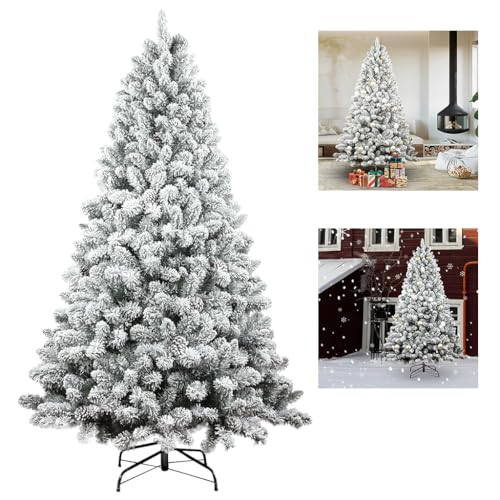The Christmas tree is one of the most recognizable symbols of Christmas, standing proudly in homes, public spaces, and town squares around the world. Each holiday season, people come together to decorate their trees with ornaments, lights, and other festive embellishments. But where did this tradition originate, and how did it evolve into the beautifully decorated trees we know today?
The Christmas Tree: From German Origins to a Global Symbol of Holiday Cheer

This blog post explores the origins of the Christmas tree, its historical roots in Germany, and the fascinating journey of its decorations—from simple candles to the dazzling lights and ornaments that brighten our holiday season.
Table of Contents
- The Origins of the Christmas Tree Tradition
- Martin Luther’s Influence on the Christmas Tree
- The Evolution of Christmas Tree Decorations
- The Spread of the Christmas Tree Tradition
- Modern Christmas Tree Decorations: Lights, Ornaments, and Beyond
- Conclusion: The Christmas Tree as a Symbol of Unity and Joy
The Origins of the Christmas Tree Tradition
The tradition of the Christmas tree is believed to have its roots in Germany, where evergreen trees were thought to represent life and endurance during the cold winter months. Long before the advent of Christmas, ancient cultures celebrated the winter solstice by bringing evergreen boughs into their homes. For ancient Egyptians, Romans, and Celts, evergreens symbolized hope and the promise of new life as they endured the darkest days of winter.
In Germany, by the early 16th century, decorated trees began to appear during the Christmas season, marking the beginning of the modern Christmas tree tradition. These early Christmas trees were often adorned with simple decorations such as apples, nuts, and gingerbread cookies. German families would place these trees indoors or sometimes in town squares, where they served as a central part of Christmas celebrations.
Martin Luther’s Influence on the Christmas Tree
One of the most famous stories surrounding the origin of the Christmas tree involves Martin Luther, the Protestant reformer who lived in the early 16th century. According to legend, Luther was walking home one winter evening when he noticed the stars shining brightly through the branches of an evergreen tree. Inspired by the scene, he brought a small tree into his home and decorated it with candles to recreate the beautiful image for his family.
This story not only reflects the symbolic nature of light in the darkness but also marks one of the first recorded instances of using candles on a Christmas tree. The glowing candles symbolized the starry night sky and brought a sense of wonder and warmth to the home during the cold winter season.
While it’s unclear how much of this story is factual, Martin Luther’s influence on the Protestant Church and his role in German culture helped popularize the idea of decorating trees with candles. This tradition became a key part of Christmas celebrations in Germany, setting the foundation for future tree-decorating customs.
The Evolution of Christmas Tree Decorations
Over the centuries, Christmas tree decorations have evolved significantly. The decorations of early Christmas trees were quite modest compared to today’s extravagant ornaments and lights. Here’s a look at the transformation of tree decorations through history:
1. Early German Decorations: Apples, Nuts, and Edibles
The earliest German Christmas trees were adorned with fruits like apples, symbolizing the Garden of Eden and the concept of paradise. These trees, sometimes called “paradise trees,” were also decorated with nuts, dried fruit, and sweet treats. Families enjoyed these edible decorations, sometimes even eating the ornaments as part of their holiday festivities.
2. Candles and the Symbolism of Light
Candles became a popular decoration on Christmas trees, largely due to the influence of the Martin Luther legend. Each candle represented the light of Christ and the hope that Christmas brings to believers. However, the use of candles also presented a fire hazard, and families had to be cautious while lighting and maintaining these decorations.
Despite the risks, candles remained a cherished symbol of warmth and light for centuries, adding a magical glow to Christmas trees. It wasn’t until the advent of electric Christmas lights that candles began to fall out of fashion.
3. Glass Ornaments and Blown Glass Balls
In the early 1800s, artisans in Germany’s Thuringia region began producing small, hand-blown glass ornaments for Christmas trees. These delicate, glass ornaments were initially quite expensive, making them accessible primarily to wealthier families. Over time, however, the popularity of glass ornaments spread, and by the mid-19th century, they became more affordable and widely available.
These ornaments, often shaped like fruits, nuts, or stars, added a new dimension of elegance to the Christmas tree. The blown-glass tradition quickly spread to other countries, and glass ornaments became a staple of Christmas tree decorations in Europe and America.
4. Tinsel and Sparkling Garlands
By the 17th century, tinsel had become a popular Christmas tree decoration in Germany. Originally made from real silver, tinsel was used to mimic the look of icicles, adding a shimmering effect to trees. Silver tinsel was both costly and prone to tarnishing, so it was eventually replaced by more affordable and durable alternatives.
Tinsel continued to be a popular Christmas tree decoration, bringing an element of sparkle and elegance to trees. It was often paired with garlands made of popcorn, cranberries, or other natural materials, creating a beautifully festive appearance.
The Spread of the Christmas Tree Tradition
By the early 19th century, the Christmas tree had gained popularity outside of Germany, especially in England and America. Queen Victoria and her German-born husband, Prince Albert, played a significant role in popularizing the Christmas tree in England. In 1848, an illustration of the royal family gathered around a decorated Christmas tree was published in the Illustrated London News. This image captivated the public, and the tradition of Christmas trees quickly spread across British society.
In America, Christmas trees began to gain popularity among German immigrants in the early 1800s. By the mid-19th century, the Christmas tree tradition had become well-established in American homes. President Franklin Pierce is often credited with bringing the first Christmas tree to the White House, while President Calvin Coolidge lit the first National Christmas Tree in 1923, marking the beginning of a cherished American tradition.
Modern Christmas Tree Decorations: Lights, Ornaments, and Beyond
Today, Christmas tree decorations are as diverse as the people who celebrate the holiday. From colorful LED lights to intricately designed ornaments, here’s how Christmas tree decorations have evolved in the modern era:
1. Electric Christmas Lights
In 1882, Edward H. Johnson, a friend of Thomas Edison, created the first string of electric Christmas lights. Johnson displayed them on his Christmas tree, causing a sensation. Although the first electric lights were expensive, they eventually became more affordable and safer than candles, revolutionizing Christmas tree decorations.
Electric lights freed families from the fire hazard of candles and allowed for more elaborate, colorful displays. Today, Christmas lights come in a variety of colors, styles, and effects, from classic white lights to animated multicolor displays that can be controlled with smartphone apps.
2. Modern Ornaments: A Reflection of Personality and Creativity
Ornaments have come a long way from the simple glass baubles of the 19th century. Modern ornaments now reflect personal interests, hobbies, and family memories. From handmade decorations to collectible figurines, each ornament tells a story. Families often buy new ornaments each year to represent memorable events or milestones, creating a tree that is uniquely theirs.
Additionally, themed Christmas trees—such as rustic, vintage, or coastal themes—have become popular, allowing people to express their creativity through tree decorations.
3. Toppers and Tree Skirts
Tree toppers, often in the shape of stars or angels, crown the Christmas tree and add a symbolic touch. The star represents the Star of Bethlehem, which guided the wise men to Jesus, while the angel represents the heavenly host that announced Christ’s birth.
Tree skirts, once purely functional for catching wax from candles, have now become decorative elements. They add a finishing touch to the tree, providing a soft base that complements the festive decorations.
Conclusion: The Christmas Tree as a Symbol of Unity and Joy
From its humble beginnings in Germany to its current status as a global holiday symbol, the Christmas tree has undergone a remarkable evolution. Each generation has added its unique touch, from Martin Luther’s candles to electric lights and modern ornaments. Yet, through all these changes, the Christmas tree remains a symbol of joy, warmth, and togetherness.
Today, decorating the Christmas tree is a cherished tradition that brings families together and fills homes with holiday spirit. Whether simple or lavishly decorated, each tree reflects the love and creativity of those who gather around it. As we continue to celebrate this beloved tradition, we honor the history and symbolism of the Christmas tree, carrying forward the spirit of hope and light it represents.
Christmas Related Posts – Check Out Now:
- Christmas – All About Christmas
- Christmas Tree
- Rudolph The Red Nosed Reindeer
- Stocking Stuffing
- 99 Christmas Wishes
- 99 Christmas Messages with Emojis
- What to Write on Christmas Card?
- Christmas Messages for Employees
- 108 Merry Christmas Messages & Quotes
- Professional Christmas Messages and Wishes
- Full Social Media Post For Christmas
- Beautiful Whatsapp Status for Christmas
- Christmas Wishes for Lovers
- Playful and Flirty Wishes on Christmas
- Christmas Eve vs. Christmas
- How to Celebrate Christmas
#Christmas #Wishes #Emojis #Holiday #Family #Fun #Cheer #Spirit














